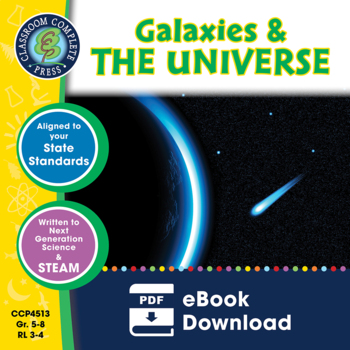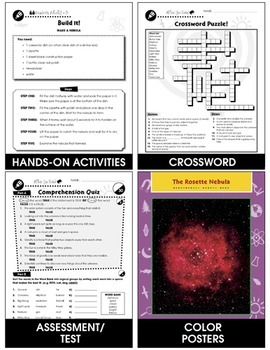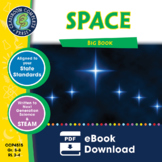Galaxies & The Universe Gr. 5-8
- PDF
Also included in
- Get the big picture about the Universe with our Space and Beyond 3-book BUNDLE. About this Resource: Start things off in our own backyard with a look at our Solar System. Travel to each of the inner and outer planets. Build a scale model of the solar system, and plan your trip to one of its planets.Price $29.95Original Price $44.85Save $14.90
Description
From the smallest particles of matter to the biggest star system, our universe is made up of all things that exist in space. Our resource gives you the big picture about space.
About this Resource:
Start off by exploring the Big Bang and formation of our Milky Way galaxy. Learn how distance is measured in light years, and how far the next closest star is to Earth. Create your own nebula using construction pager, newspaper and water. Build pinhole galaxies to present barred, elliptical, spiral, and irregular galaxies to the class. Find out how much you would weigh on the sun, moon and planets. Solve the mystery of black holes and write your own science fiction story about it. Finally, travel to the most distant objects in our universe—quasars.
Aligned to the Next Generation State Standards and written to Bloom's Taxonomy and STEAM initiatives, additional hands-on experiments, crossword, word search, comprehension quiz and answer key are also included.
************************************************************************
View Similar Titles:
► Space Travel & Technology Gr. 5-8
************************************************************************
Check out our sister TPT shops:






